NEW YORK -- Prosecutors and defense lawyers offered starkly differing profiles Wednesday of Rajat K. Gupta during closing arguments in the former Goldman Sachs board member's insider trading trial.
"Rajat Gupta abused his position as a company insider," said Assistant U.S. Attorney Richard Tarlowe in an impassioned summation as he stood before the federal court Wednesday morning. Gupta's alleged leaks of secret Goldman information to his hedge fund friend helped feed an insider trading operation to "cheat average investors,” the prosecutor said. Tarlowe argued that Gupta, a man who'd reached the highest echelons of American industry as former managing partner of consulting firm McKinsey & Co. and a member of the boards of directors of Goldman Sachs and Procter & Gamble, enjoyed extraordinary access to information that investors did not. He used that information to help himself and his friend, the now-jailed hedge fund manager Raj Rajaratnam, Tarlowe said.
Gupta’s lead defense attorney, Gary P. Naftalis, told jurors Gupta was a legitimate businessman who had business dealings with Rajaratnam that were entirely above board. "Rajaratnam had all sorts of conversations with Mr. Gupta about all sorts of legitimate things," Naftalis said in his muted argument. But Naftalis's main aim during his summation was to poke holes in the government's case, in part by showing that the government's allegations were based on circumstantial evidence. The government's burden of proof, Naftalis said, is "not satisfied by suspicion, it's not satisfied by guesswork. ... You need real evidence." In various forms, he repeated the line that there is "no real, hard, direct evidence to support the allegations prosecutors have leveled against Mr. Gupta."
Gupta is on trial in U.S. District Court in Manhattan on one count of conspiracy and five counts of securities fraud. Prosecutors allege that Gupta illegally passed information he gleaned from confidential meetings of the Goldman Sachs and Procter & Gamble boards to Rajaratnam, who used the information to make stock trades.
Rajaratnam was convicted of insider trading in October and sentenced to eleven years in prison. If convicted, Gupta faces up to 25 years.
Jurors begin deliberating the case Thursday.
One potential challenge for the defense inside the jury deliberation room may be Gupta's elite status, said Michael S. Weinstein, a former federal prosecutor who chairs the white collar defense practice at the law firm Cole Schotz. “There’s a class element" to the case, said Weinstein. “You want people who are of the same mindset that the defendant is -- a businessman or an executive.” Most jurors in this case are not of that mindset, he said.
Another defense challenge is likely the surfeit of indirect evidence, which even by Naftalis's admission paints a very negative picture of Gupta. “The circumstantial evidence is compelling and devastating,” said James Cox, professor of corporate and securities at Duke University, who has followed the trial closely.
Throughout the four-week trial, prosecutors have sought to paint Gupta as a member of the boardroom elite who used his access for illlicit gain. They called high-profile witnesses including Goldman CEO Lloyd Blankfein, to testify that Gupta attended Goldman board meetings and heard secret, market-moving information -- such as whether to accept a $5 billion investment from Warren Buffet's Berkshire Hathaway during the financial crisis in 2008. Other prosecution witnesses testified that, immediately after meetings like that one, calls were placed between phone numbers associated with Gupta and Rajaratnam. Shortly thereafter, according to testimony, Rajaratnam bought or sold shares in Goldman Sachs.
The prosecution played a wiretapped conversation from July 2008 that appeared to show Gupta confirming to Rajaratnam that the board had discussed purchasing insurance giant AIG. That conversation isn't part of the government's case against Gupta, but prosecutors have used it as evidence of the close relationship between Gupta and Rajaratnam and the type of information the two discussed.
In his closing argument, Tarlowe came back to the Buffett allegation, telling jurors, "Gupta was one of a very limited number of people who knew about Warren Buffett's investment in Goldman Sachs" before the public. "The first thing he did," after he heard about the investment during the board meeting "was call Rajaratnam" who then "wasted no time" in burying millions worth of Goldman Sachs stock, Tarlowe said. "That evidence is devastating for the defendant."
The defense argued neither this incident nor others cited by the prosecution fail to directly show Gupta offering Rajaratnam inside information -- just that there were phone calls and stock trades. "Telephone records don't tell you what was said on a call," Naftalis said. "There is not a single recording in which Rajat Gupta gave Mr. Rajaratnam [information] on which he traded. ... You think you'd have a recording of it one time. And there wasn't one because it didn't happen."
It's a strategy that Thomas Gorman, a lawyer at the firm Dorsey & Whitney who defends clients against Securities and Exchange Commission and Justice Department securities investigations, said could pay off for the defense. “Circumstantial evidence is susceptible to interpretation," Gorman said. "The defense doesn't have the burden of proof. They just need to point out other reasonable possibilities that might explain some of these circumstances.”
Gupta's lawyers also questioned the credibility of prosecution witnesses, including Goldman Sachs CEO Lloyd Blankfein.
Naftalis cited Blankfein's testimony about a Wall Street Journal article from late-October 2008 that reported the firm planned to fire 10 percent of its workforce -- more than 3,000 people. "I don't even know that it's true, I just know the article says that," Blankfein said. During cross-examination of the Goldman CEO earlier in the trial, Naftalis presented a transcript of a voicemail Blankfein sent Goldman employees the day of the Journal report, confirming the layoffs.
Blankfein, "was being less than candid when he told you he couldn't remember firing 3,000 people," Naftalis told jurors Wednesday. Blankfein "remembers nothing, and that's exactly what his testimony is worth."